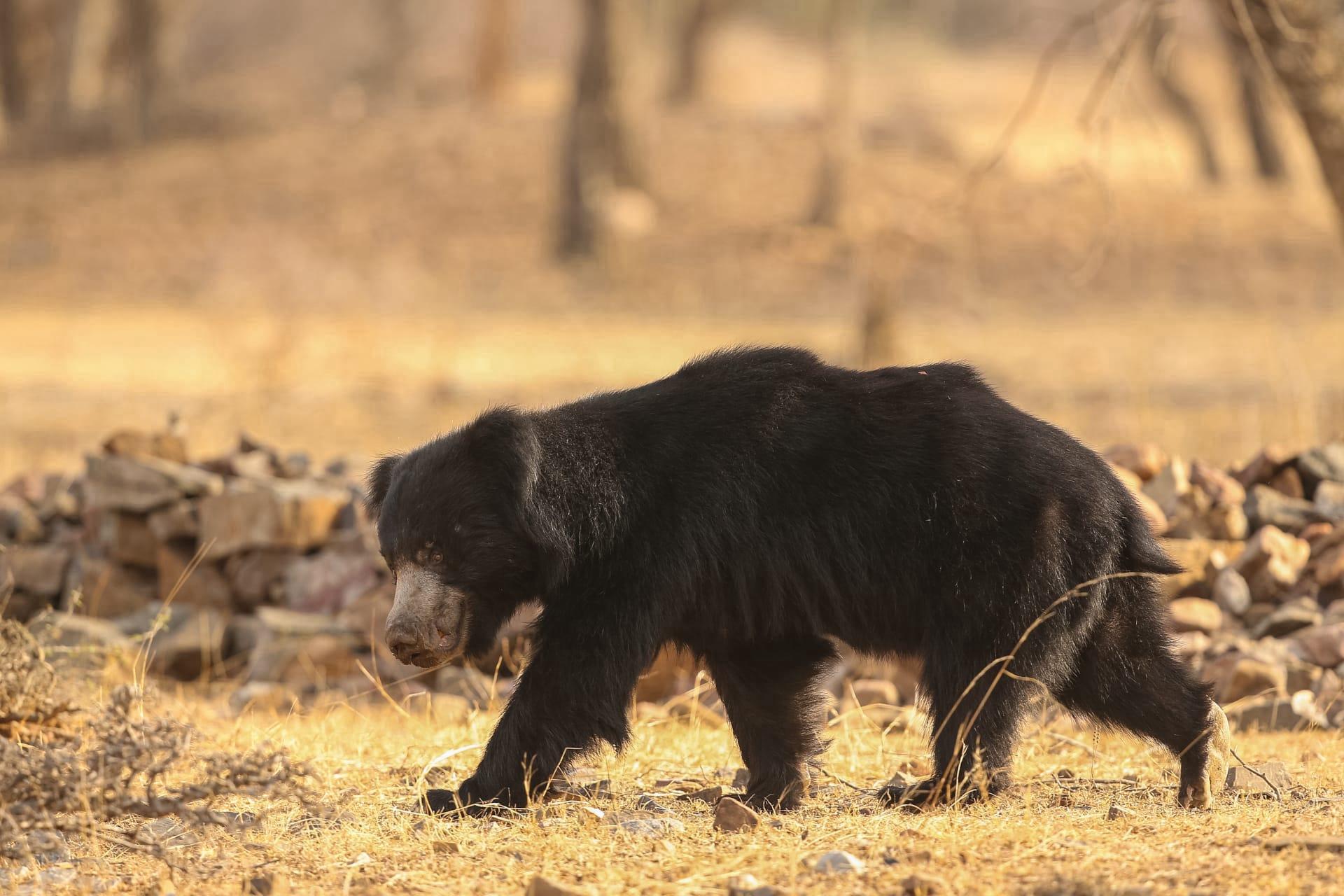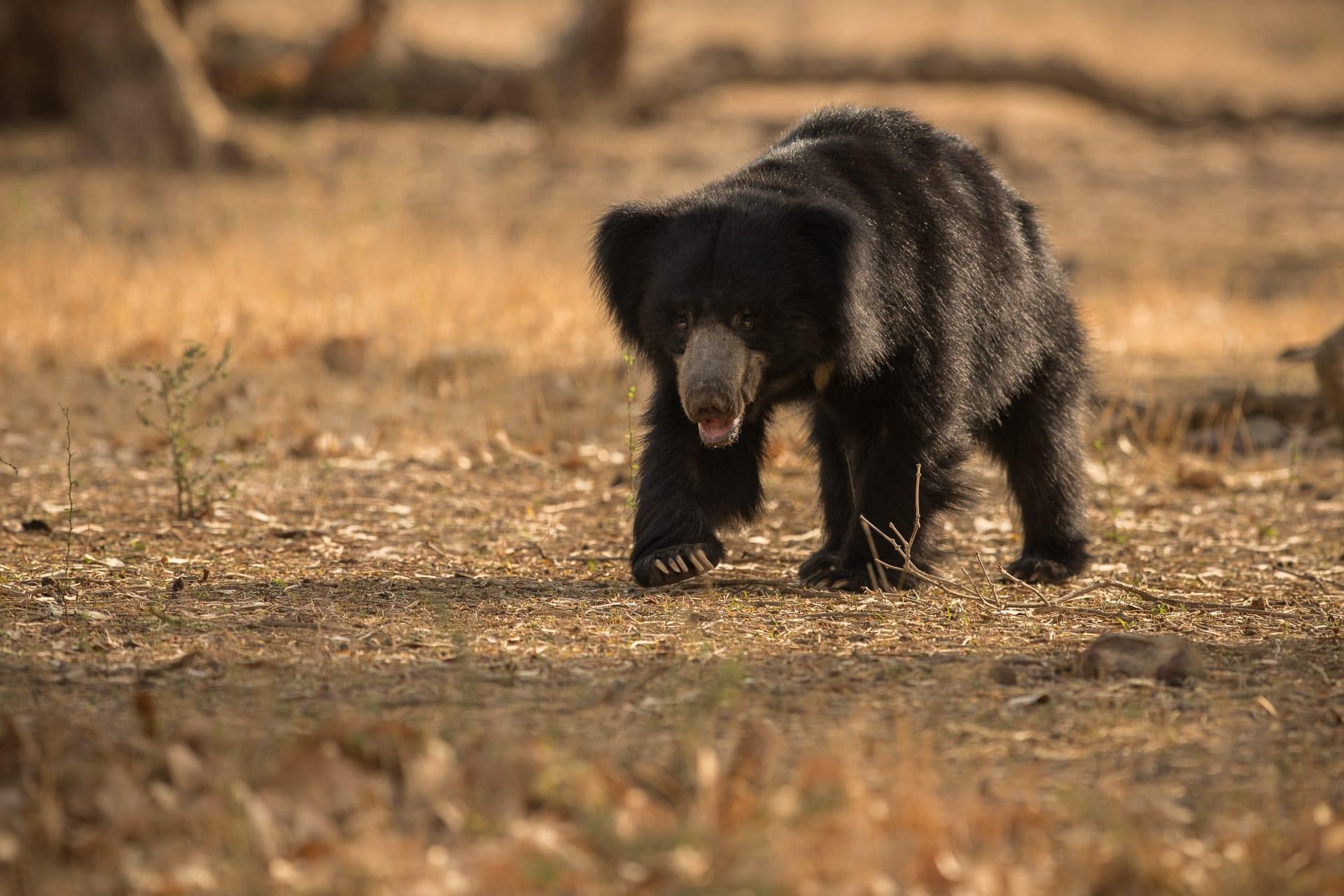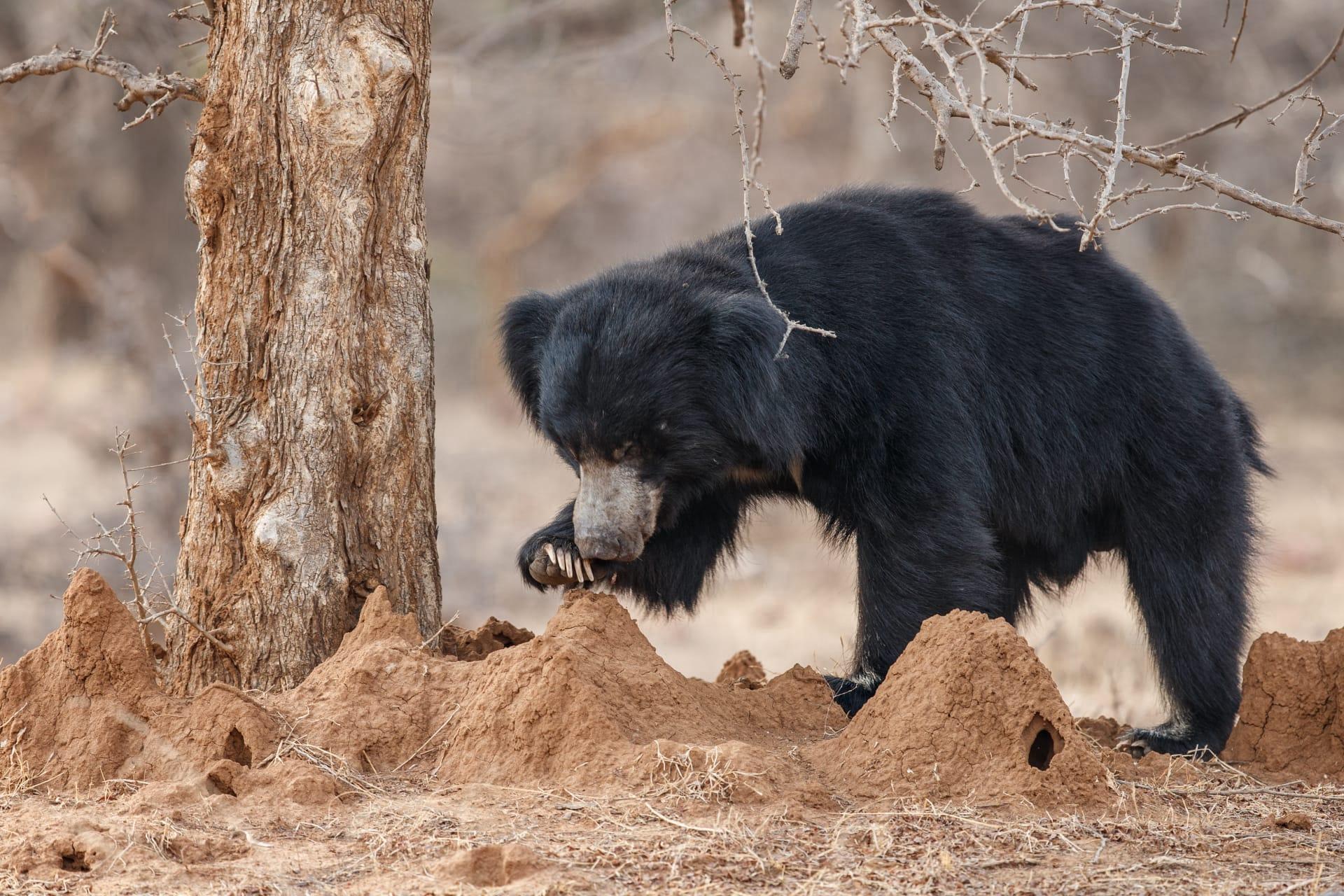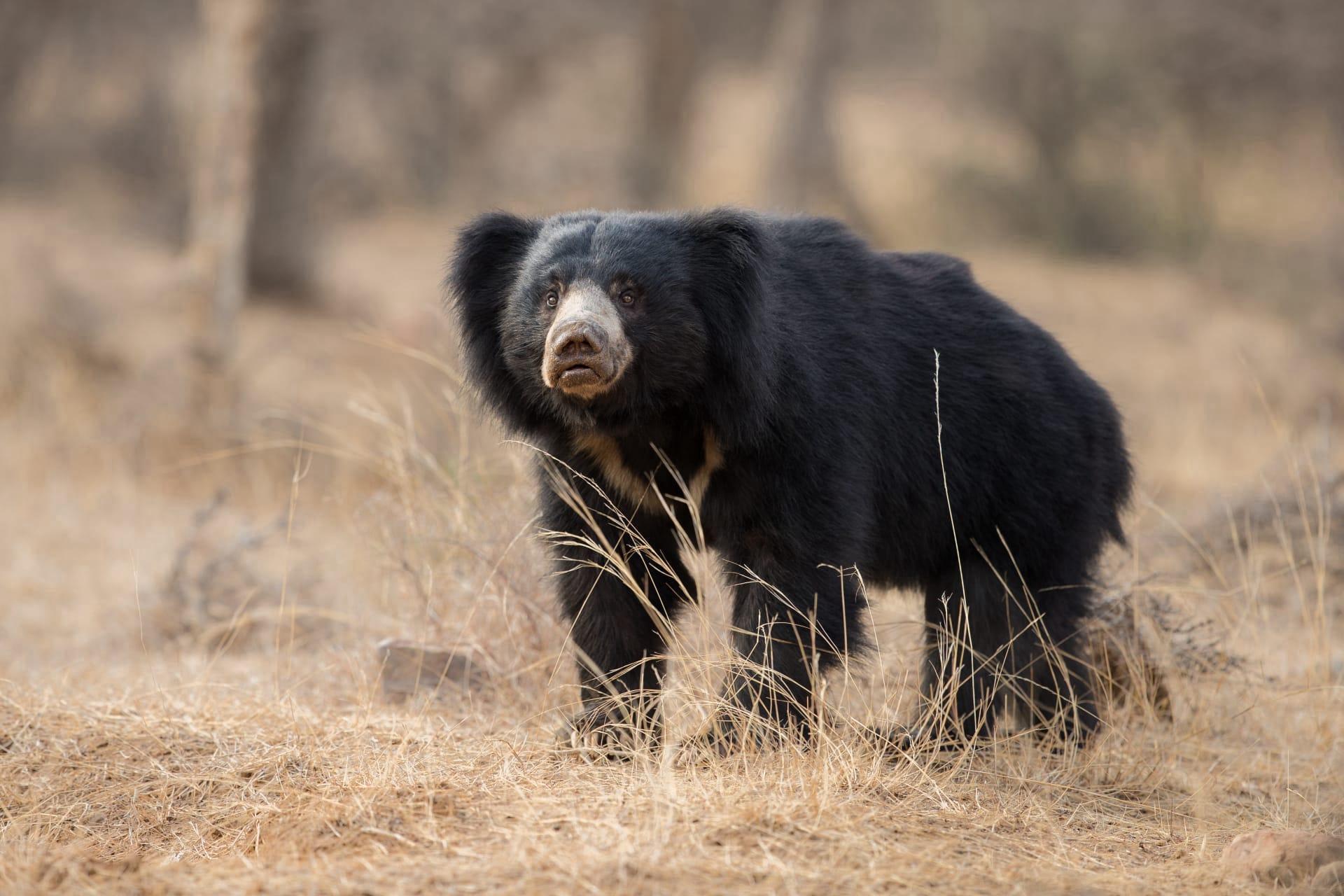Sloth Bear Characteristics
- Home /
- Mini Encyclopedia /
- Animal /
- Sloth Bear Characteristics
1
Sloth bears, native to the Indian subcontinent, boast a shaggy black coat with a distinctive white or yellow "U" or "Y" shaped mark on their chest. Males are larger, typically weighing between 176 to 320 pounds, with a body length of about 4.6 to 6.2 feet. Females are smaller, averaging 120 to 210 pounds. These bears possess powerful limbs with sharp, curved claws, ideal for digging. Their lifespan in the wild ranges from 20 to 25 years, but can extend up to 30 years in captivity.
Sloth bears have a unique and specialized organ: a gap in their front teeth. This adaptation enables them to suck up insects, particularly termites and ants, their primary food source. They close their nostrils and use their lips like a vacuum nozzle, creating a loud sucking noise. This efficient feeding technique allows them to extract insects from their nests quickly, a skill essential for their survival in the wild.

2
Question: What do sloth bears primarily eat and how do they obtain their food?
Answer: Sloth bears primarily feed on insects, especially termites and ants. They use their powerful forelimbs and long claws to break into termite mounds and ant hills. Once they expose the insects, sloth bears utilize their most distinctive feature, a gap in their front teeth, to suck up the insects. They seal their nostrils and employ their lips like a vacuum, creating a notable slurping sound as they ingest their prey. This unique feeding method is highly efficient, allowing them to consume a large number of insects in a short period.

3
Sloth bears are not known for their speed but rather their strength and climbing abilities. They can move surprisingly fast when threatened, but generally, they maintain a slow, ambling gait. Their powerful limbs and sharp claws are not just for foraging but also enable them to climb trees, which they often do to escape predators or to rest.
When hunting for food, sloth bears primarily rely on their keen sense of smell to locate termite mounds and ant hills, their favorite meals. They use their strong forelimbs to break open these structures and then employ a unique feeding technique: sucking up insects through the gap in their front teeth. This method is noisy but effective, allowing them to consume large quantities of insects swiftly, which is crucial for their nutrition.

4
Sloth bears inhabit various habitats, including dry and wet tropical forests, grasslands, and even scrublands, primarily in India, Sri Lanka, and Nepal. They prefer areas with abundant insect life and fruit trees. These bears are typically nocturnal, avoiding the daytime heat, and are often found near water sources.
Reproduction in sloth bears involves a gestation period of about 210 days, resulting in the birth of usually one to two cubs, although occasionally three. Cubs are born blind and stay with their mother for up to two years, learning essential survival skills. The mother sloth bear is exceptionally protective, often carrying her cubs on her back, a unique behavior among bear species. This close bond ensures the cubs' safety and education in foraging and navigating their environment.

5
Book: "The World of the Sloth Bear" by Mark A. Smith, published in the USA, 1999. This comprehensive book delves into the biology, behavior, and conservation of sloth bears. Smith, a renowned wildlife biologist, combines scientific research with field observations to present a detailed portrait of these unique animals. The book also discusses the challenges sloth bears face due to habitat loss and human-wildlife conflict.
Book: "Bears of the World: A Journey in Search of the Sloth Bear" by Lara Lutzenberger, published in the UK, 2005. Lutzenberger, an acclaimed nature writer, takes readers on a journey across the Indian subcontinent, exploring the natural habitat of the sloth bear. The book offers insights into the bear's diet, behavior, and the cultural significance of sloth bears in local communities. It also highlights conservation efforts and the importance of preserving this species for future generations.